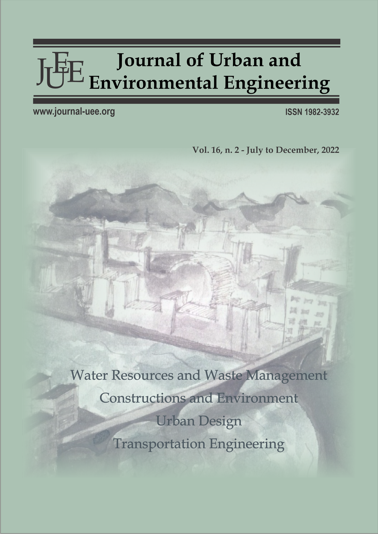PlasME MODEL OF PLANT SELECTION FOR GREEN INFRASTRUCTURE
Abstract
The process of selecting plant species directly impacts the efficiency and effectiveness of green infrastructure (IV). Despite that the IV can be inserted into the ecosystem concept of urban plants, the selection process for these structures is still done in a reductionist way. The aim of this paper was to present the PlasME model of plant selection for green infrastructure in an interdisciplinary way based on the interface of green technologies and functional ecology. To allow the design of structures that meet multiple objectives, such as pollution control, quantitative control of urban drainage waters, amenities, provision of habitats, places of contemplation and social interaction, the methodology of the work was divided into 3 phases. Initially, the key interdisciplinary terms were discussed: urban ecosystem, green technologies, bioretention systems, and functional ecology to structure the foundations of a new paradigm of planning and design of the urban ecosystem. Second, a dynamic and iterative species selection process was carried out based on the functional ecology of the interface of a kind of BS (Bioretention System) functions and the attributes of the vegetation in an BS. Finally, the third step was the application of the BS vegetation definition process in resting regions (typical coastal sandbank vegetation) in southern Brazil. The main functional attributes considered in the selection process were root depth, root system density, relative growth rate, root thickness, and leaf surface area, which directly influence the Ecosystem functions (EF) of regulation and purification of BS as interception, flow regulation, infiltration modification, perspiration, erosion control, and pollutant removal. At the end of the selection process, the following species were chosen: Myrcia palustres, Lantana sp, Sphagneticola trilobata, Plumeria rubra, Vrisia friburguenses, and Typha domingensis, considering the services of the regulatory and cultural ecosystem, as well as the EF already specified. The development of the process was dynamic and iterative, providing a new perception of the role and functionality of bioretention systems for the urban ecosystem, expanding to a more interdisciplinary and integrated process of adding structures to the urban space. The model can be improved by adding other ecosystem services using the same methodology we carried out.




